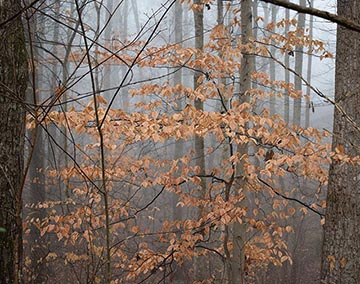
Cup plant (Silphium perfoliatum) is a tall wildflower that is native to Kentucky and much of the eastern U.S. It commonly grows 4-6 feet tall and has been known to grow even taller in ideal conditions. Once established, cup plant spreads both by seeds and by underground rhizomes that form clones. In favorable conditions, it will spread rapidly often forming large clumps.
Cup plant can grow in many different habitats with medium to moist soils. It is most often found in the wild in prairie remnants and other open areas. Many wildlife and pollinator conservation mixes include cup plant because it is such a hardy plant. Cup plant is also becoming increasingly popular in native wildflower gardens. However, its height and tendency to spread may make it appear too weedy for small flower gardens or formal settings.
Like most of the other flowers in the Asteraceae family, cup plant is highly attractive to pollinators. Butterflies, native bees, and honey bees are especially attracted to its bright yellow flower heads that resemble sunflowers. In the fall, cup plant produces abundant seeds that songbirds, such as goldfinch, will readily eat.
In Kentucky, cup plant blooms from July to September. This is an especially important time for honey bees in Kentucky and surrounding states because it falls in the middle of the summer dearth. The summer dearth is what beekeepers call the time in the middle of the summer when there aren’t as many flowers blooming that honey bees will use.
Cup plant gets its name from its leaves. The upper leaves grow in pairs that completely encircle the stem. The leaves are very sturdy for a wildflower and the paired leaves form a “cup” around the stem. The cup can hold water from rain or dew and provides a valuable source of water for insect pollinators, songbirds, and even frogs. In fact, its leafy cups not only give cup plant its common name but also its specific epitaph (the second part of a scientific name). Perfoliatum means through the leaf and refers to how the stem appears to go through the leaves.

Cup plant provides a wide variety of benefits to many different types of animals. In addition to its nectar, seeds, and “cups” of water, its stems can be chopped up, tied into bundles, and used to make mason bee homes after the plant dies back in the winter. Those who have space and want to grow a unique, native plant that benefits pollinators and other wildlife should definitely consider cup plant.

This article was part of Shannon’s original Kentucky Pollinators and Backyard Wildlife blog which evolved into the blog for Backyard Ecology.

Backyard Ecology: Exploring Nature in Your Backyard
Nature isn’t just “out there.” It’s all around us, including right outside our doors. Hi, my name is Shannon Trimboli, and I am the host of Backyard Ecology. I live in southcentral Kentucky and am a wildlife biologist, educator, author, beekeeper, and owner of a nursery specializing in plants for pollinators and wildlife conservation. I invite you to join me as we ignite our curiosity and natural wonder, explore our yards and communities, and improve our local pollinator and wildlife habitat. Learn more or subscribe to my email list at www.backyardecology.net.



